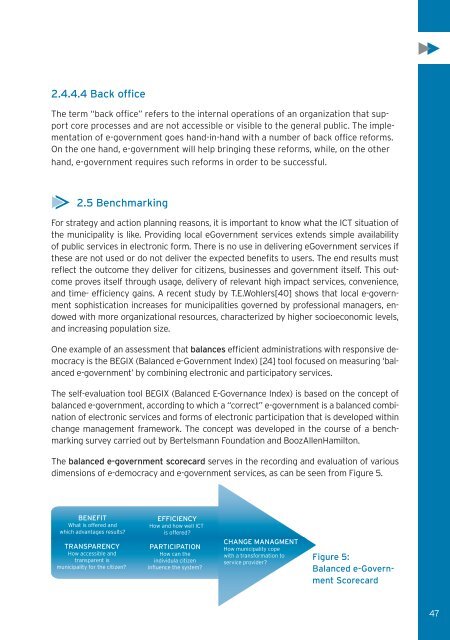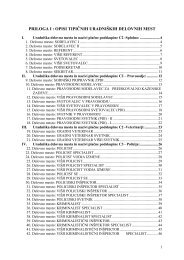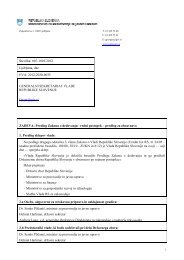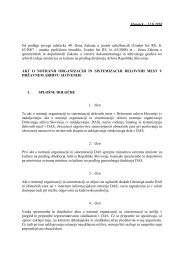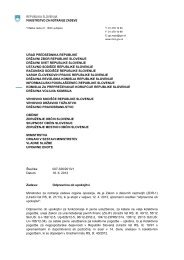for Local Governments
for Local Governments
for Local Governments
Create successful ePaper yourself
Turn your PDF publications into a flip-book with our unique Google optimized e-Paper software.
2.4.4.4 Back office<br />
The term “back office” refers to the internal operations of an organization that support<br />
core processes and are not accessible or visible to the general public. The implementation<br />
of e-government goes hand-in-hand with a number of back office re<strong>for</strong>ms.<br />
On the one hand, e-government will help bringing these re<strong>for</strong>ms, while, on the other<br />
hand, e-government requires such re<strong>for</strong>ms in order to be successful.<br />
2.5 Benchmarking<br />
For strategy and action planning reasons, it is important to know what the ICT situation of<br />
the municipality is like. Providing local eGovernment services extends simple availability<br />
of public services in electronic <strong>for</strong>m. There is no use in delivering eGovernment services if<br />
these are not used or do not deliver the expected benefits to users. The end results must<br />
reflect the outcome they deliver <strong>for</strong> citizens, businesses and government itself. This outcome<br />
proves itself through usage, delivery of relevant high impact services, convenience,<br />
and time- efficiency gains. A recent study by T.E.Wohlers[40] shows that local e-government<br />
sophistication increases <strong>for</strong> municipalities governed by professional managers, endowed<br />
with more organizational resources, characterized by higher socioeconomic levels,<br />
and increasing population size.<br />
One example of an assessment that balances efficient administrations with responsive democracy<br />
is the BEGIX (Balanced e-Government Index) [24] tool focused on measuring ‘balanced<br />
e-government’ by combining electronic and participatory services.<br />
The self-evaluation tool BEGIX (Balanced E-Governance Index) is based on the concept of<br />
balanced e-government, according to which a “correct” e-government is a balanced combination<br />
of electronic services and <strong>for</strong>ms of electronic participation that is developed within<br />
change management framework. The concept was developed in the course of a benchmarking<br />
survey carried out by Bertelsmann Foundation and BoozAllenHamilton.<br />
The balanced e-government scorecard serves in the recording and evaluation of various<br />
dimensions of e-democracy and e-government services, as can be seen from Figure 5.<br />
Figure 5:<br />
Balanced e-Government<br />
Scorecard<br />
47


